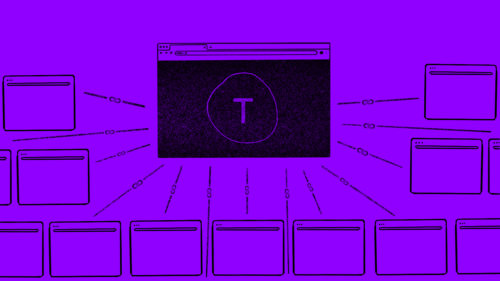In the past couple of decades, a majority of startups are on the internet. Inevitably they need tech to run or support them. That's not going to change in the future - if anything, it is only going to increase.
This has made us see developers as magicians. They are the messiahs who can make our entrepreneurial dream a reality. Well, not anymore (not for everything anyway). Enter No-code - the ability to build products and power processes without writing code.
This movement has been in the works for a few years now. I also caught onto this a bit late and ended up building complex tech with code when we had all but ZERO dollars in revenue. Not smart.
$3 million revenue runs on a $60/month NoCode stack
Then we started powering our startup, Flexiple, with NoCode. Our annual revenue has crossed $3 million and our stack is still fully NoCode that costs us $60/month:
- Marketing website: Unicorn Platform ($10)
- Product: Airtable ($0 - on credits) & Bubble ($25)
- Scale & side projects: Webflow ($25)
Building tech has not only become more easy and accessible, it isn't astronomically costly anymore!
7 types of NoCode tools for all your startup needs
Having experienced the power of NoCode tools and built the stack at Flexiple, I wanted to share how you can leverage it to build almost every aspect of your startup's requirements.
So, in this article I cover 7 types of NoCode tools along with:
A. Names of tools
B. Specific use case each solves
C. Real implementation examples
D. Alternatives
1. Marketing websites
A) Tools: Unicorn platform, Umso
B) Use cases
- You can simply drag & drop elements onto a page
- Build a marketing website in less than 60 mins
- Easily edit your marketing copy & communication to customers
C) Example
- We built our entire website of http://flexiple.com containing over 100+ pages on Unicorn platform
D) Alternatives
- Carrd.co
- Webflow
2. Database storage and information websites
A) Tool: Airtable
B) Use cases
- Advanced and more UI-friendly excel
- Easily collect data using an intuitive form
- Neatly present the data on your website in intuitive layouts
C) Example
- To help individuals laid off due to COVID, we built a page listing those who could be hired: flexiple.com/covid-layoff-h…
D) Alternatives
- Tools like Sheet2site, Table2site work well with Airtable to make quick websites
3. Beautiful info & e-commerce websites
B) Use cases
- Build beautiful custom layouts without Code
- Leverage its "CMS" to make numerous automated pages
- Use particularly if you are a designer and want to implement custom design to pixel perfection
C) Examples
- We built both Scale and Founder origin stories on Webflow
D) Alternative
- Bubble: However, if the focus is pixel perfect design, Webflow is much better.
4. Automate workflows
A) Tools: Zapier, Integromat
B) Use cases
- Automate recurring manual effort
- Store data in CRM, send automated mails, integrate tools, etc.
- Zapier is more intuitive but costly, Integromat has a steeper learning curve but handles complex cases
C) Example
- Almost all our dynamic flows were handled by Zapier or Integromat. User signup -> storing their data in our db -> sending them a mail

D) Alternatives:
5. Login & membership systems
A) Tools: Memberstack, MemberSpace
B) Use cases
- To convert your static website to have signups/logins and to also manage SAAS memberships
- Restrict content or pages to only paid users
C) Example
- We built a dashboard for new projects viewing, sharing invoices, etc. using the above set of tools:
D) Alternative:
- Bubble offers an in-built authentication system but doesn't manage subscriptions
6. Any complex web-based product
A) Tool: Bubble
B) Use cases
- Job-boards, marketplaces, internal tools => build varied applications using its "workflows" & database
- Quite self-sufficient and removes the need to depend on other tools
- Responsive design is not the best
C) Example
- Our internal tool is entirely built on top of Bubble and saves ~160 human hours per month (has sensitive data, so can't share video)

D) Alternatives:
- Adalo, Glide: More suited for mobile apps (discussed next)
7. Mobile apps
B) Use cases
- Build complex mobile apps with a simple drag & drop functionality
- Automate user actions with in-built workflows
- Use their own DB or even GoogleSheets to store data
C) Example
- Not used these products myself, but a really cool example is of the apps made to help organize & share COVID resources with people: covidresource.glideapp.io
D) Alternatives
- No credible alternatives that I know of
Unless it solves a business bottleneck, DON'T buildd it.
NoCode has made building a startup more accessible
Is NoCode going to replace code? My bet - definitely not. Even if the extremely unlikely event happens, it is surely a couple of decades away.
However, the days of making costly MVPs are over for a majority of industries. So, here’s your broad 7-step playbook to launch your startup:
- Choose an idea or space
- Make a landing page on a NoCode builder
- Start writing about it - as a blog and on social media (background process)
- Build a MVP on NoCode
- Make money - only focus
- Earn enough to hire a developer to take the product to the next level
- Make more money






